White-tail deer
Odocoileus virginianus
White-tail deer are good swimmers
Advertisement
White-tail deer Scientific Classification
- Kingdom
- Animalia
- Phylum
- Chordata
- Class
- Mammalia
- Order
- Artiodactyla
- Family
- Cervidae
- Genus
- Odocoileus
- Scientific Name
- Odocoileus virginianus
Read our Complete Guide to Classification of Animals.
White-tail deer Conservation Status
White-tail deer Facts
- Name Of Young
- Fawn
- Group Behavior
- Herd
- Fun Fact
- White-tail deer are good swimmers
- Estimated Population Size
- Unknown
- Biggest Threat
- Man
- Most Distinctive Feature
- White tail
- Other Name(s)
- Virginia deer
- Gestation Period
- 200-207 days
- Litter Size
- 1
- Habitat
- mixture of hardwoods, croplands, brushlands and pasturelands
- Predators
- Humans, wolves, mountain lions, bears, jaguars, and coyotes
- Diet
- Herbivore
- Common Name
- White-tail deer
- Number Of Species
- 1
- Location
- Southern Canada to South America
- Group
- Herd
White-tail deer Physical Characteristics
- Color
- Brown
- Skin Type
- Hair
- Top Speed
- 30 mph
- Lifespan
- 72 months
- Weight
- 40kg-232kg (150lbs-611lbs
- Height
- 0.33m-1.1m (1.7ft-3.9ft)
- Length
- 1m-2.2m(3.3ft-7.2ft)
- Age of Sexual Maturity
- 12 months
- Age of Weaning
- 12 weeks
View all of the White-tail deer images!
The white-tail deer, also called Virginia deer, live from Southern Canada to South America.
This deer that has a white tail is bigger the further away from the equator it lives. They are a favorite target for hunters, but wolves, mountain lions, bears, jaguars, and coyotes also love to dine on them. White-tail deer are herbivores who often swim to get away from their predators. These animals that have been clocked running up to 30 miles per hour give birth typically to one fawn each year.
5 Incredible White-tail Deer Facts!
- White-tail deer have been clocked running up to 30 miles per hour and jumping up to 10 feet in the air. They have also been seen swimming up to 13 miles per hour.
- White-tail or Virginia deer are Crepusculars who are most active at dawn and dusk.
- White-tail deer eat plants and grass during the spring and summer while feeding on limbs and bark during colder months.
- White-tail deer have great vision and hearing, but they often rely on their sense of smell to know when predators are nearby.
- There are at least 26 different white-tail deer subspecies in the world.
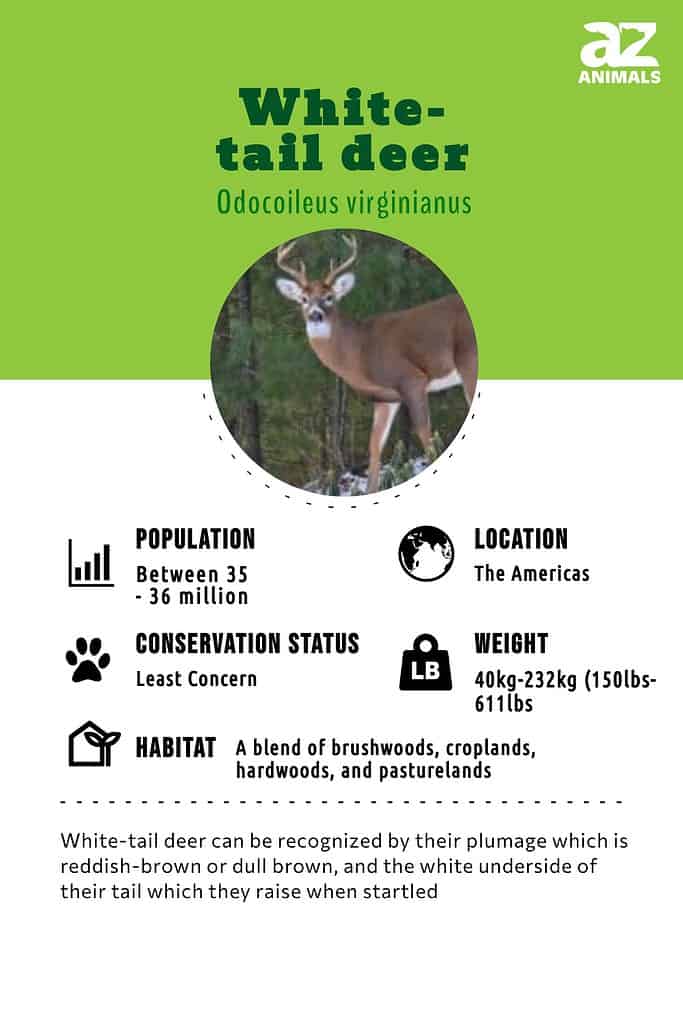
Scientific Name
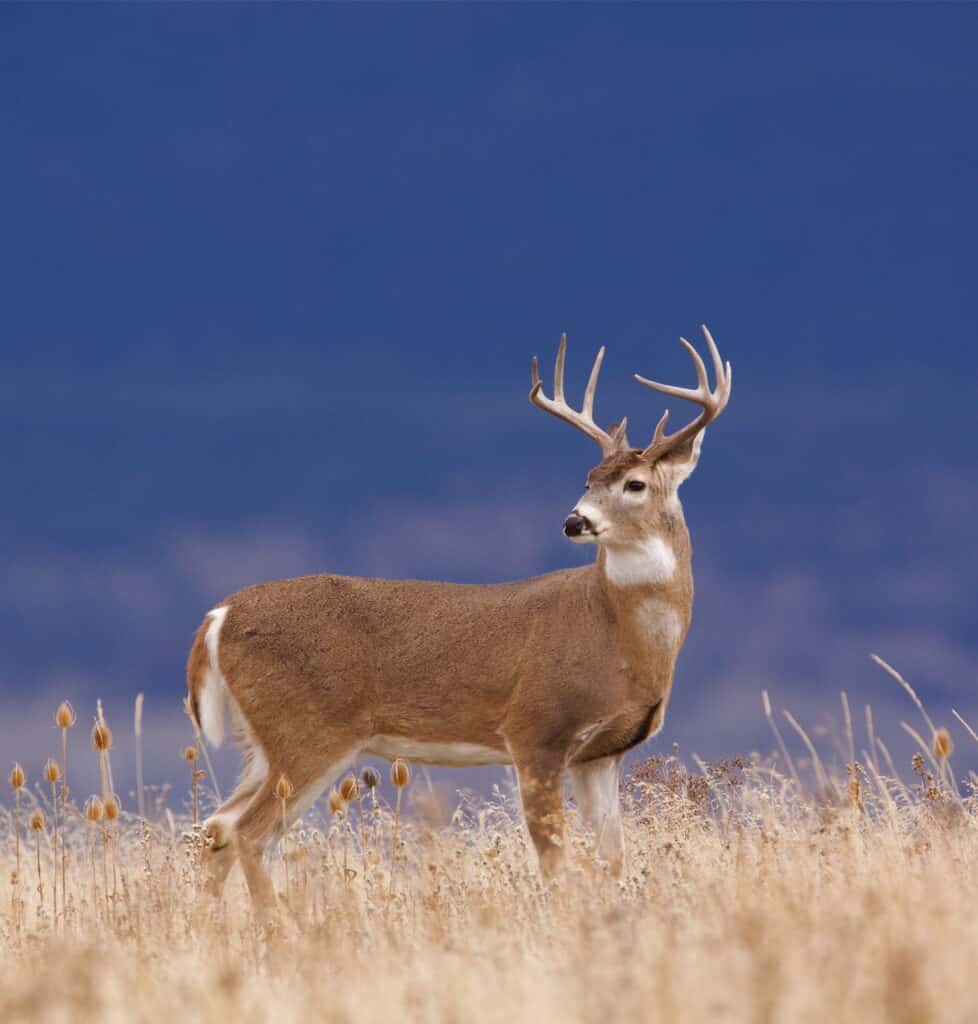
White-tailed deer are related to the caribou, elk, and moose
©Tom Reichner/Shutterstock.com
Odocoileus virginianus is the scientific name for white-tail deer. The genus name means hollow tooth. They are mammals in the Artiodactyla order. Knowing the scientific name is essential because it allows people to use the scientific name to talk about the animal worldwide. This order also includes moose, elk, and caribou. Members of this order are found throughout the world. The word deer is an Old English word that means beast. Like sheep, moose, and buffalo, the word deer is both singular and plural.
Evolution
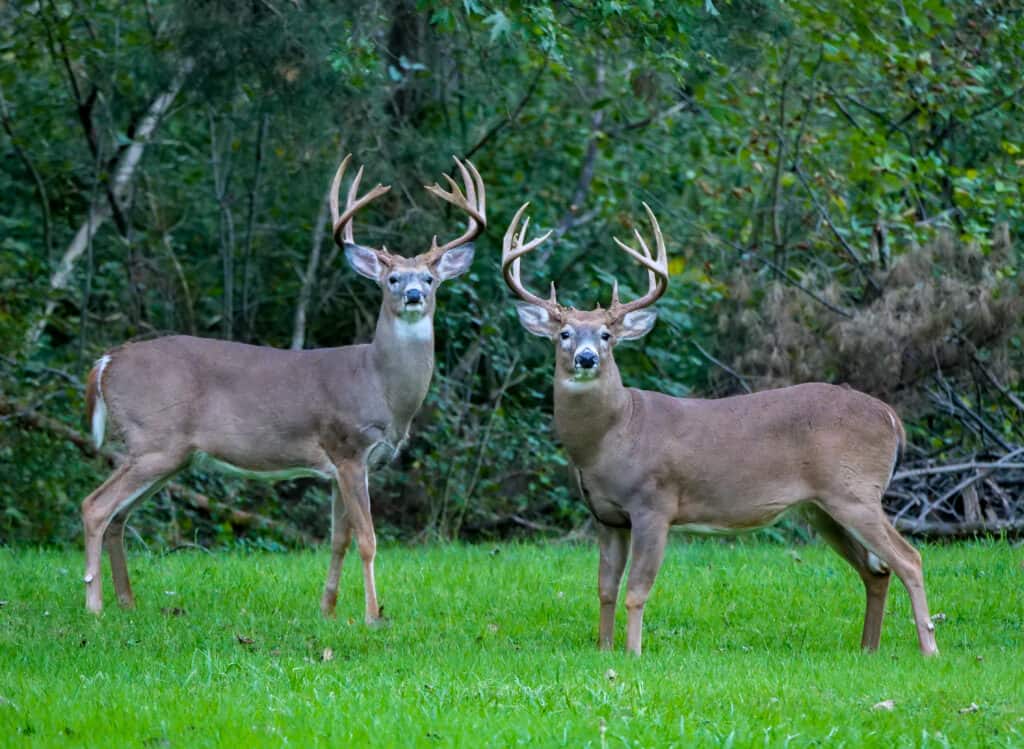
The ancestors of the present-day white-tailed deer emerged millions of years ago in Central Asia
©iStock.com/Ralph Navarro
The story of white-tail deer begins as the tale of all other deer species: with a tusked mammalian ancestor which existed during the Eocene era between 34 – 56 million years ago. These mammals diversified extensively owing to the emergence of the Himalayas and the Alps during the Oligocene era 23 – 34 million years ago.
The very first cervids capable of sporting antlers appeared during the Miocene era approximately 5.333 – 23.03 million years ago. During the Middle of the era, about 8 – 11.5 million years ago, the Capreolinae, the ancestors of the modern-day white-tail deer, elk, and moose emerged in Central Asia.
Their populations increased significantly along with those of other cervids during the Pliocene era (2.6 – 5.3 million years ago) owing to an abundance of food encouraged by the cooler climate which prevailed.
Appearance
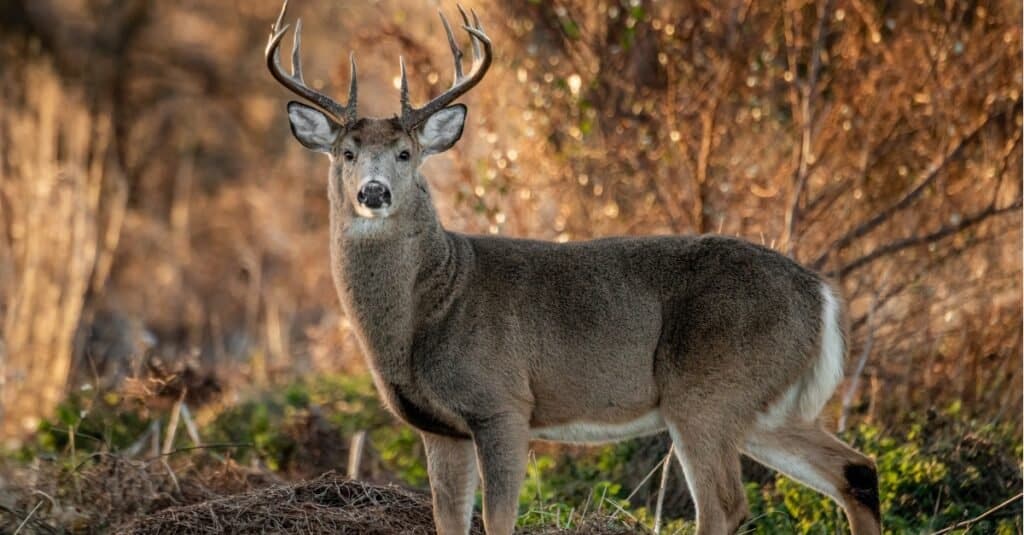
Male white-tailed deer grow their antlers during spring and summer and shed them by fall or winter
©iStock.com/Harry Collins
Most white-tail deer are tan or reddish-brown in the spring. As the days get longer, its coat starts changing to a deeper brown. White-tail deer have white on their throats, under their eyes, and the underside of their tail.
There are white white-tail deer. While a select few are albino, most have inherited a recessive gene leaving them with leucism. Some will be white all over while others have brown spots. These deer have black noses. About 10% of all white-tail deer are born with this condition. Herds often are found in Texas’ Edwards Plateau and New York state, but they can be found anywhere.
White-tail deer stand from 1.7-to-3.9-feet tall. White-tail deer are smaller than elk or moose. A small white-tail deer is about the same height as a pony. Most white-tail deer will reach about 27% of their adult size during the first year, grow to be about 57% of their adult size during the second year and about 80% of their adult size during the third year. They do not reach their full size until they are about 8 years old.
Male white-tail deer grow antlers, which they lose annually. They grow in the spring and summer and are cast off during the fall or winter. The antler tissue is some of the fastest-grown tissue found on any animal. While the antlers are growing, deer have feeling in them to help them realize how big they have grown when going under objects. The biggest antler racks are found on animals over 4.5 years old because of the amount of energy needed to produce them is twice as much as that required to grow the skeletal system. How big the antlers grow and when they are lost is controlled by how much testosterone is in the buck’s body. While it is unusual, females can grow antlers, but they do not lose theirs. While the antlers are growing, they are covered with a fine substance called velvet. The velvet helps provide nourishment to the antler’s cells. The velvet falls off by mid-summer.
The hair on a white-tail deer is relatively short. In the animal’s northern rangers, it has a hollow shaft that fills with hair. This helps to keep the animal warm in the winter. Different types of hair growth occur across the deer’s body. The hair on the deer’s back is usually the longest hair on its body, and it usually has a black tip. The hair on the side of the deer’s body is shorter, but it often still has a tiny black tip. Longer twisted hair grows on the deer’s underside.
This deer takes its name from its white tail. If the deer is standing peacefully, you may not even see the white hair because the tail is covered in brown hair on its top. Once the deer starts moving, it raises its tail, and you will see the beautiful white hair on its underside. The tail is generally between 3.5-and-14-inches long.
One of the heaviest white-tail deers killed by hunters was harvested in Ontario, Canada, in October 1977. Wildlife officials believe that the deer weighed more than 540 pounds when alive. It weighed 431 pounds when field dressed.
White-Tail Deer vs. Mule Deer
White-tail deer are often compared to mule deer. While White-tail deer are found across the Eastern seaboard of North America and into Mexico, their range does overlap in some western states, across the Great Plains, and into Mexico. The easiest way to tell mule deer and white-tail deer apart is antlers. Mule deer antlers are generally larger and each species of deer have a unique shpe. Beyond that, white-tail deer are more reddish and normally slightly smaller.
Behavior
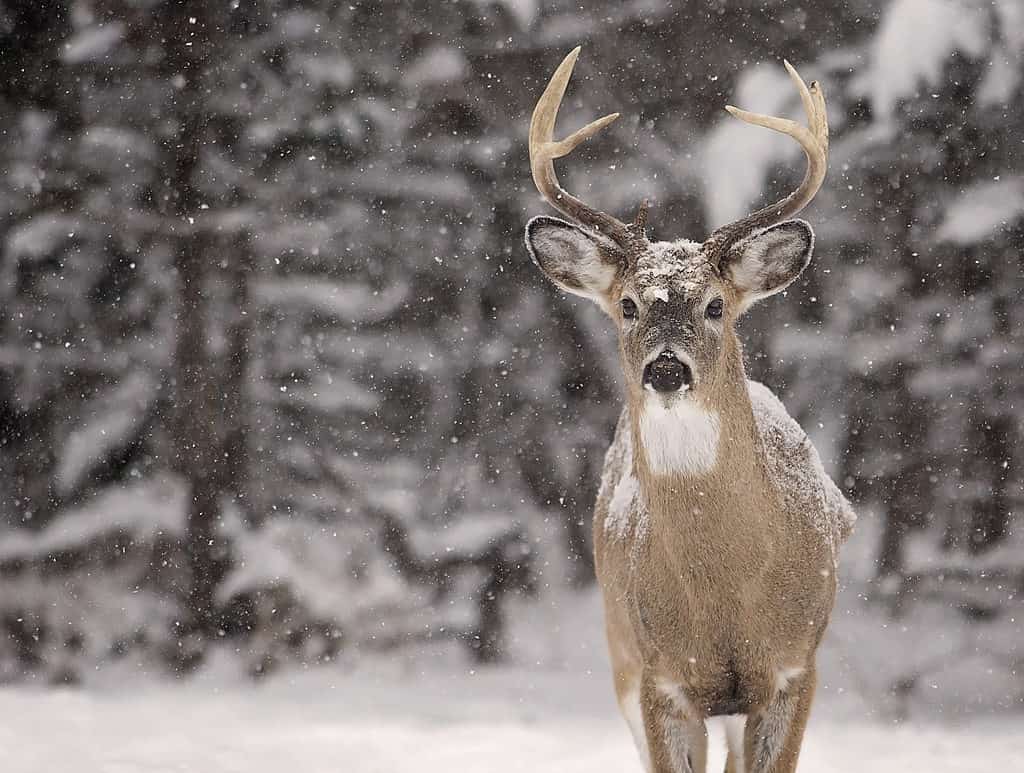
White-tail deer move their ears forward when they are listening intently and flatten them when determining the position of a predator in the area
©iStock.com/Lynn_Bystrom
White-tail deer, like bears, skunks, bobcats and possums, are most active at dawn and dusk. Deer usually live in an area covering less than 1 one square mile. During the summer months, herds are generally of one sex. Once fall arrives, bucks move in to try to claim the right to the area. Then, they breed all the does in that region.
Within herds, deer fight for dominance. This is especially true during the rut. This season usually starts as the days begin to get shorter in the fall and continues until the antlers fall off and testosterone levels are at their lowest. Males will push and shove each other initially. At the peak of the breeding season, these fights may escalate to total out antler wars.
At the same time, bucks will start rubbing against trees. Scientists are not 100% sure why, but they believe this is to leave their scent. Within a few days, bucks will also start leaving scrapes. They will paw the soil until it becomes bare soil. Then, they will urinate in that spot and rub the urine into the ground. These areas are usually located under a broken tree branch. While some bucks use tree branches that are already broken, others pull on the tree branch with their mouths or hit it with their antlers until it breaks. Then, they mark the branch with their scent using their foreheads. Often, bucks create rubs and scrapes during the middle of the night. Many other animals, including sheep, camels, goats, pronghorns, bison, giraffes and antelope, have a similar rutting behavior.
Like dogs, you can learn a lot by watching the body language of white-tail deer. Ears are usually held in an upright position, but if they drop them so that they become more horizontal, then they are conveying that they are not happy with how a fawn is behaving. It is like the same look that many people have received from their mothers.
If the ears move to a forward position, then the deer is listening intently. The chances are that it thinks a predator is in the area and is trying to determine its exact location.
Habitat
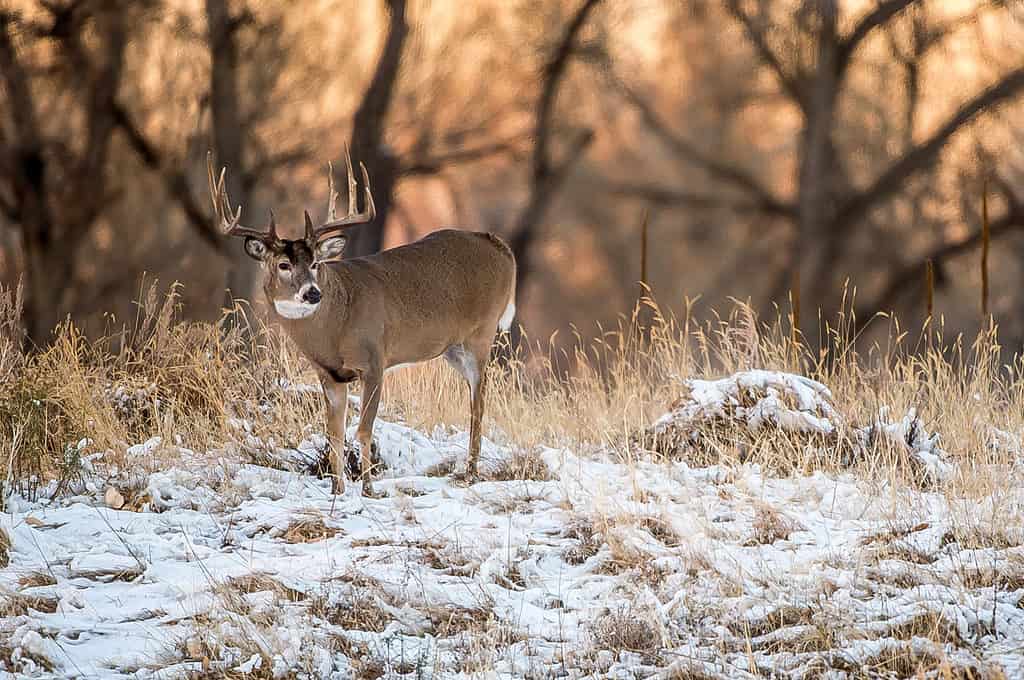
White-Tail deer are pretty adaptable in terms of their habitat choices
©iStock.com/Matt Dirksen
White-tail deer are not very picky when it comes to their habitat. They have made adaptations that allow them to live almost anywhere. In an ideal world, the white-tail deer biome would be filled with grassy fields and meadows. The biome would be near a broad-leaved or coniferous forest. During the cooler months, the biome would be a thicker forest to protect it from winter winds.
Diet
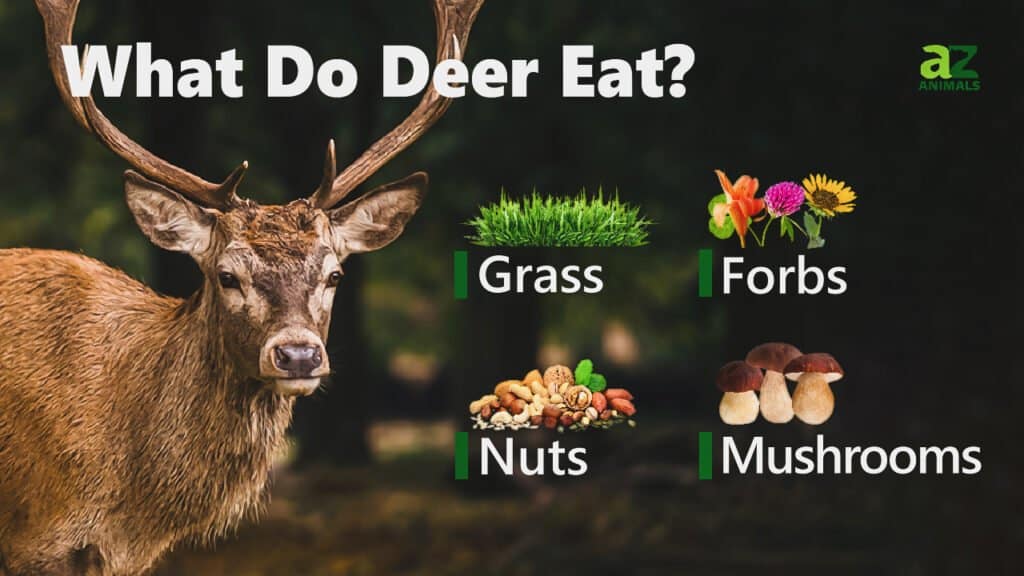
White-tail deer prefer to dine on grass, weeds, and flowers. They will eat corn, nuts, and fruit during the warmer months. Both bucks and does often eat a diet that is higher in fat during the fall. Food can be challenging to find in the wintertime, so this helps them store up the needed fat to survive. Rutting requires a lot of energy, and it is not unusual for a buck to lose up to 25% of their body weight during the fall and winter.
White-tail deer can eat very tough plants because they have a four-chamber stomach. They swallow plants without chewing them. Then, they process the food at a later time. Cattle, sheep, goats, buffalo, and camels all have this four-part stomach called a ruminant stomach.
Predators and Threats
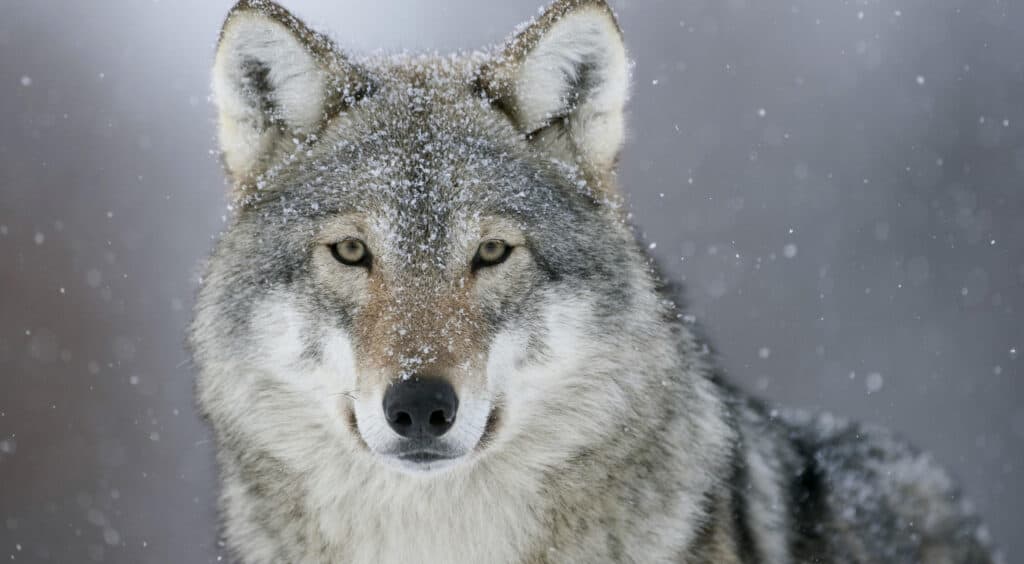
Wolves are one of white-tail deer’s predators
©nataliatamkovich/Shutterstock.com
The most significant threat to white-tail deer is hunters. The largest number of deer hunters is found in Texas, where about 840,000 white-tail deer are killed annually. Bobcats, wolves, and coyotes also kill white-tail deer, but their numbers are down significantly in the areas where white-tail deer live.
Reproduction and Life Cycle
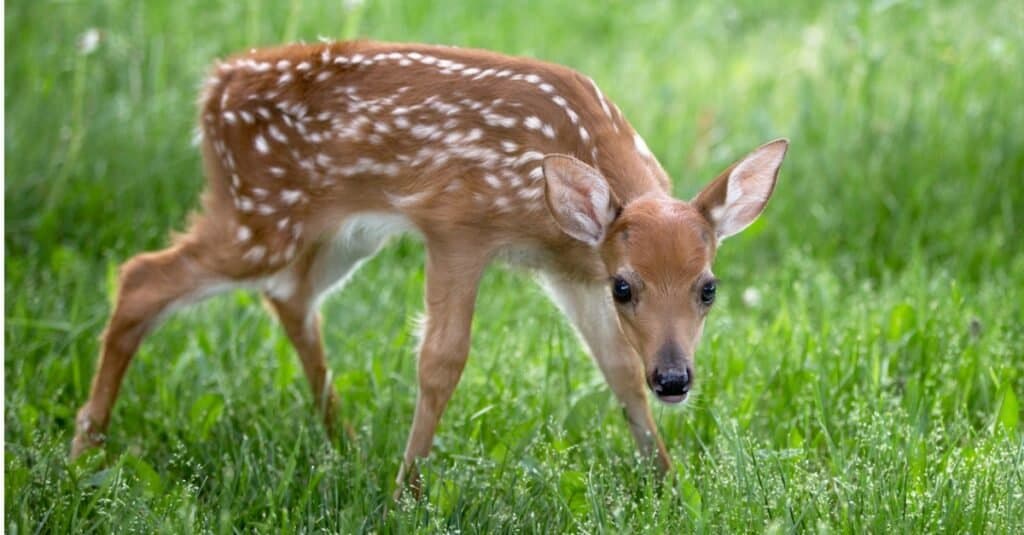
White-tail deer often have just one fawn although they may also have twins or triplets, occasionally
©iStock.com/Lynn_Bystrom
Most white-tail deer will not breed until they are two years old, but some breed as early as seven months. They are short-day breeders who get pregnant in the fall. Then, approximately 205 days later, they give birth to a fawn. This cycle ensures that the fawn is born when the grass is greenest in the early spring, so the doe can get enough milk to take care of the fawn.
While most do only have one fawn, some does have given birth to twins or triplets. Fawns stay hidden in the beginning because they are not strong enough to run from predators. The doe comes back to the hiding spot regularly to feed her fawn. Before fall, the mother forces male fawns to leave their side and join bachelor groups. When the breeding season occurs, bachelor hoods will break up, with each deer going off on its own, searching for females to breed.
Most of these groups are from two to six animals. Female fawns may stay with their mothers and join the same maternal herd. These herds are often much bigger than bachelor herds.
One of the adaptations that you may see if you watch white-tail deer is that does will flash their white stomachs up in the air when running away from predators. Scientists believe this adaptation is so that it is easier for their fawns to see and follow them.
Population
No one knows how many of these deer are in the world. There are between 35 -36 million white-tail deer in the United States. Additionally, there are at least 14 subspecies of these deer living in Central and South America. There are also white-tail deer in Canada. It is estimated that at least 40,000 white-tail deer live in Ontario, with more found in other providences. In most of its regions, this species is the deer with the largest population. The population of white-tail deer has swung over history. They were almost hunted into extinction in the late 1800s and early 1900s. Since the passage of state hunting laws, white-tail deer numbers have rebounded throughout more recent history. Depending on the location, history also shows that there are more deer during wetter periods and fewer deer during droughts. Facts are evident that you may be able to watch the number of white-tail deer born and tell what will happen long-term in the weather.
The population of white-tail deer has swung over history. They were almost hunted into extinction in the late 1800s and early 1900s. Since the passage of state hunting laws, white-tail deer numbers have rebounded throughout more recent history. Depending on the location, history also shows that there are more deer during wetter periods and fewer deer during droughts. Facts are evident that you may be able to watch the number of white-tail deer born and tell what will happen long-term in the weather.
View all 108 animals that start with WWhite-tail deer FAQs (Frequently Asked Questions)
What states do white-tail deer live in?
Every state in the United States has white-tail deer, except for Alaska and Hawaii. While they have been rarely sighted, there are a few white-tail deer in Utah.
Will white-tail deer attack humans?
Yes, white-tail deer can attack humans. When these attacks occur, it is almost always in the fall by a buck who is trying to keep everyone away from his territory.
Are white-tail deer dangerous?
Generally, white-tail deer are not dangerous. They often live close to highways, which can lead to automobile accidents. Approximately 200 people are killed annually in car-deer accidents in the United States. Most deer-car accidents happen because the car runs into the deer, but accidents have happened because of a deer running into an automobile.
What do white-tail deer eat?
White-tail deer eat plants throughout the year. They will also eat corn and many types of vegetables.
How long do white-tail deer live?
The average lifespan of white-tail deer is about 72 months old. There have been several deer who have lived to be older than 20. Scientists can determine the age of a deer by cutting one of its teeth in the laboratory. Then, they count age rings on the tooth. Deer who live in captivity have a longer lifespan than those living in the wild.
What are the differences between a fallow deer and whitetail deer?
There are many differences between fallow deer and whitetail deer. Both are prevalent throughout the world and are similar in height, but the fallow deer weighs up to 200 pounds, and the whitetail weighs up to 300 pounds. Whitetail deer grow out of their white spots while the fallow deer maintain them for life.
What are the differences between the White-tail deer and the Black-tail deer?
The greatest differences between a white-tailed deer and a black-tailed deer can be found in their morphology and size. The white-tailed deer is larger than the black-tailed deer, weighing up to 405 lbs while the black-tailed deer weighs 225 lbs at its maximum. Furthermore, the white-tailed deer stands up to 3.9 feet tall and grows 7.2 feet long while the black-tailed deer stands up to 3.7 feet tall and 5 feet long.
Thank you for reading! Have some feedback for us? Contact the AZ Animals editorial team.
Sources
- Banks Outdoors, Available here: https://banksoutdoors.com/15-surprising-facts-about-whitetail-deer/
- Real Tree, Available here: https://www.realtree.com/deer-hunting/galleries/10-facts-to-know-about-whitetail-deer-antlers
- Nature Works, Available here: https://nhpbs.org/natureworks/whitetaileddeer.htm#:~:text=The%20white%2Dtailed%20deer%20is,between%2090%20and%20200%20pounds.
- Bowhunter-ed, Available here: https://www.bowhunter-ed.com/wisconsin/studyGuide/White-Tailed-Deer-Hair-Can-Give-Clues/302051_8997/
- Welcome Wildlife, Available here: https://www.welcomewildlife.com/white-tailed-deer/
- Wilderness Classroom, Available here: https://wildernessclassroom.org/wilderness-library/white-tailed-deer/
- Deer Busters Canada, Available here: https://www.deerbusterscanada.ca/pages/types-of-deer-in-canada
- Wildlife Management Pro, Available here: https://www.wildlifemanagementpro.com/2007/05/30/range-and-habitat-of-whitetail-deer/
- Outdoor Life, Available here: https://www.outdoorlife.com/articles/don-zaidle/2007/09/when-big-bucks-turn-bad/

















